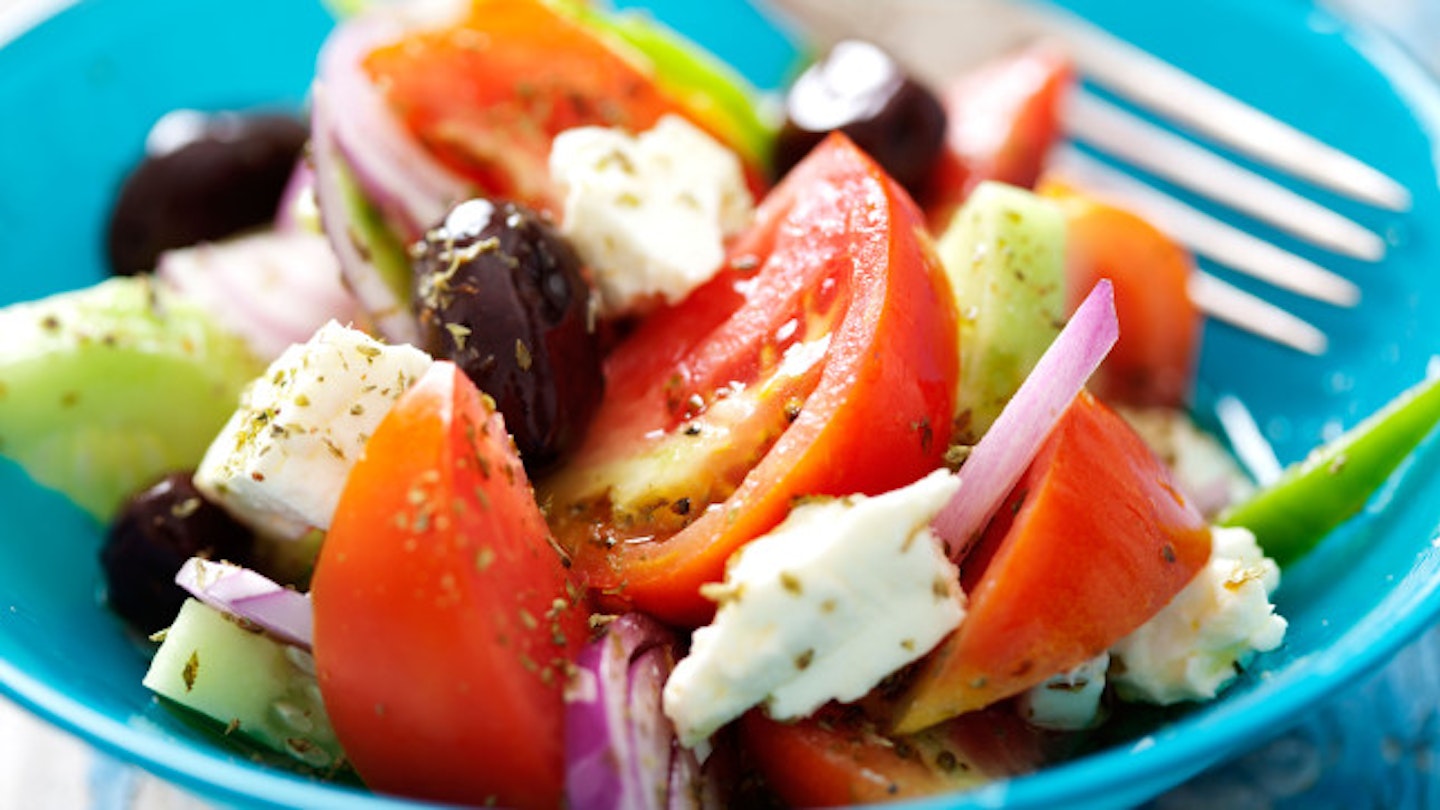WHAT IS IT?
The low-FODMAP diet is a scientifically proven diet plan, which helps control symptoms of IBS. The theory is that eating foods high in FODMAPs increases the amount of liquid and gas in the small and large intestine, resulting in common IBS symptoms such as, bloating, diarrhoea and abdominal pain. The good news is that a diet low in FODMAPs should help lessen these symptoms.
WHAT ARE FODMAPS?
It’s certainly not a catchy name, but FODMAPs are a group of carbohydrates found in a wide range of foods from apples, to milk, kidney beans and even honey (see gallery for low-FODMAP and high-FODMAP foods).
The acronym stands for:
-
Fermentable - Oligosaccharides
-
Disaccharides
-
Monosaccharides - Polyols
Translation? Dr Gibson, co author of The Complete low-FODMAP Diet says: “Fodmaps bring more water into the bowel because they are poorly absorbed in the gut and are fermented rapidly by bacteria in the bowel. Both of these distend the intestine (stretch its walls) and this causes the pain, bloating and change in bowel habits.”
WHAT DOES THE DIET INVOLVE?
The diet involves restricting various foods high in FODMAPs for eight weeks, including grains, fruits and vegetables.
Dr Gibson says: “The key is to avoid foods that are high in FODMAPs and replace them with foods that are low in FODMAPs - the aim is to reduce the FODMAPs consumed, not to eliminate them completely.”
Once the eight weeks are over, during which time the gut is rested and your symptoms have settled, the period of reintroducing FODMAPS’s begins.
Dr. Gibson adds: “After the trial is over, you reintroduce small amounts of high-FODMAP foods into your diet to identify those foods which trigger your symptoms. You then restrict these foods to control your symptoms.”
WHAT SYMPTOMS WILL IT HELP ALLEVIATE?
Dr. Gibson says: “A low-FODMAP diet can help reduce all the symptoms associated with IBS, such as bloating, abdominal pain, discomfort, change in bowel habits and abdominal distension.”
IS THE DIET ONLY FOR SUFFERERS OF IBS?
As Dr. Gibson explains: “The diet has been designed to help people with all sorts of functional gut symptoms - the most common example is people with irritable bowel syndrome,” However, it can also help people with other digestive problems such as, Crohn’s disease, coeliac disease, inflammatory bowel disease and ulcerative colitis.
SHOULD YOU FOLLOW THE DIET UNDER THE GUIDANCE OF AN EXPERT?
Dr. Gibson says: “It can be implemented without medical guidance, but it is easier and better to do under the guidance of your doctor or dietitian. This enables better nutritional balance, greater success and fewer restrictions over the longer term.”
**DOES IT HAVE PROVEN RESULTS? **
Not only is it scientifically proven, but according to researchers at King’s College London, the diet works for about 70% of people with IBS who try it.
HOW QUICKLY WILL PEOPLE SEE RESULTS?
Dr. Gibson says: “Most people are improved within a week, but we recommend staying strictly on the diet for 4 weeks before determining whether it’s effective in you. It may take a little while to work out how to change your dietary habits.”
WILL IT TAKE ME LONGER TO PREPARE MEALS?
Dr. Gibson says: “Initially, yes. But once you have understood and experienced the diet and low-FODMAP food preparation, no!”

CAN I STILL DRINK ALCOHOL?
If you suffer from IBS, alcohol should be enjoyed in moderation as too much can aggravate IBS symptoms.
FODMAP DIET PROS
-
The low-FODMAP diet doesn’t need to be permanent. It only takes four weeks to monitor your symptoms before you can slowly start to reintroduce high-FODMAP containing foods.
-
The diet does not ban all FODMAPs - instead it teaches you how to make wise food choices.
-
It gives you control of your body. Dr. Gibson adds: “The sufferer can drastically reduce their symptoms that control his/her life. The diet empowers you to effectively deal with your symptoms.”
FODMAP DIET CONS
-
Dr. Gibson says: “Most people say that they miss bread and onions [high-FODMAP foods] but this can be accounted for with good use of recipes and simple cooking techniques.”
-
Eating out at restaurants may be tricky. Dr. Gibson says: “If you’re uncertain about the food on your menu, choose the gluten-free option, and ask the chef to avoid adding onions into your dish.”
TOP LOW FODMAP FOODS
Bananas, blueberries, chickpeas, green beans, strawberries, oranges, lemons, potato, kale, ginger, cucumber, tomatoes, chicken, canned tuna, salmon, beef, lamb, pork, turkey, Quorn mince.
HIGH FODMAP FOODS
Onions, cream cheese, milk, margarine, yogurt, sports drinks, fizzy drinks, wine, beer, milk chocolate, wheat, bran cereals, watermelon, avocados, cherries, pears, apples, soy beans, leeks, artichokes, garlic, celery, cauliflower.
Check out these delicious low FODMAP recipes
FODMAP recipes
 1 of 8
1 of 8med-chicken
 2 of 8
2 of 8Spinach potato cakes
 3 of 8
3 of 8Herb, spinach and brie frittata
 4 of 8
4 of 8Blueberry coconut muffins
 5 of 8
5 of 8Sesame chicken summer rolls
 6 of 8
6 of 8Gluten-free carrot cake
 7 of 8
7 of 8Chicken, bacon and basil pasta
 8 of 8
8 of 8